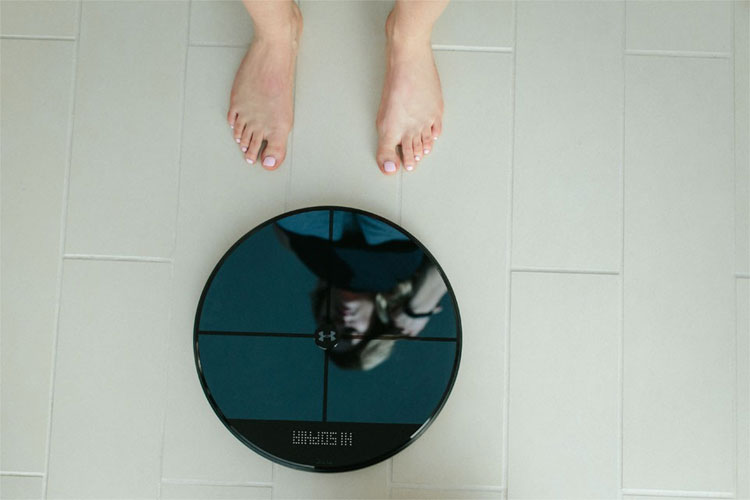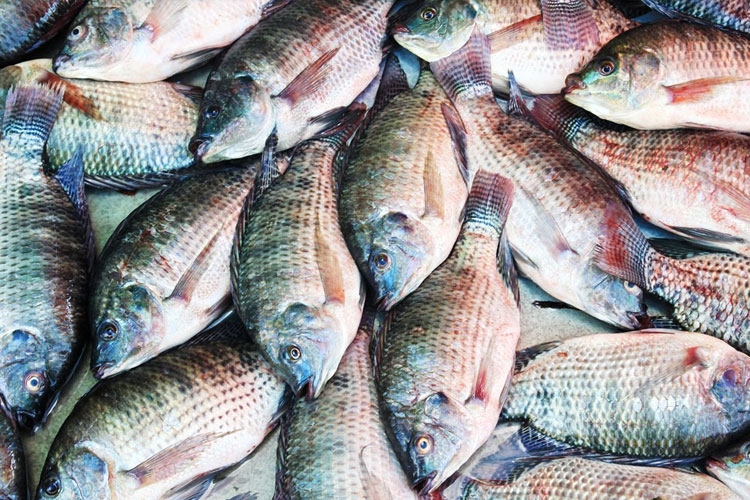Imagine your perfect family meal: Smiling kids, a variety of healthy foods on the table and clean plates afterward. An easy, hassle-free process from start to finish. It may seem like this ideal meal is just out of reach, but the truth is there’s no one perfect way for a family to eat healthy. All families are different, and our healthy eating styles can — and should — reflect that.
When you’re balancing work, life and kids, healthy eating is sometimes the last thing on your mind. Luckily there are some quick tricks that make it easier to eat healthy as a family. Remember: Healthy eating is all about a variety of foods, especially vegetables, fruit, whole grains, lean protein and reduced-fat dairy. Here are some ways to get the whole family to eat healthier (no drastic lifestyle overhaul required):
- Prioritize sit-down meals. Sit down with the family for dinner most days of the week. If you can’t do dinner, try breakfast. Having at least one sit-down meal with your family gives you a chance to bond and teach your kids what healthy choices look like.
- Make only one meal. What you make for dinner should be the main option. Encourage your kids to try new, unfamiliar foods — but don’t force it. Doing so only creates a power struggle you will surely lose. Research shows that kids are more likely to accept new foods after multiple exposures and in fun, stress-free environments.
- Engage your kids in the cooking process. It’s never too early to develop a love for healthy eating. Sharing the meal-prep process with kids helps them learn how the food is made. They will be more likely to accept new foods (even veggies!) when they are invested in the process. Also, it never hurts to have some extra hands around the kitchen.
- Plan ahead for the week. Choose one meal-planning day per week, and stick to it. You can take the kids shopping, then have them help with preparation and serving. Put half of the servings in the freezer so you’ll have quick, healthy meals at the ready later on in the week.
- Eat by example. If you want your family to eat well, you have to eat (and enjoy) a range of healthy foods, too. Children are more likely to try new or “yucky” foods if they see parents and siblings enjoying them repeatedly. As a best practice, refrain from expressing dislike or disinterest when trying new foods yourself, especially in front of impressionable family members.
Written By My fitness Pal
So you go to the gym twice a week, hit the weights a bit, do some cardio and crunches, and on your off days yoga does the trick. But you look the same as you did a year ago — what gives? Turns out, the key to unlocking strength and tone is finding exercises that recruit a large amount of muscle fiber. For stronger, more visibly defined arms, try throwing these moves into the weightlifting portion of your workout for the next eight weeks, and watch your arms go from good to amazing!
The Workout
1. Dead-Hang Chin-up Grasp a pull-up bar with an underhand, shoulder-width grip. Pull your shoulder blades down towards your tailbone and draw them in towards your spine (a). Pull yourself up so that your collarbone is in line with the pull-up bar (b). Take four seconds to lower yourself down to the starting position, keeping the shoulders down and back throughout. That’s one rep. NOTE: If you cannot pull yourself up, loop an exercise band around the pull-up bar and place your knee in it to decrease the level of difficulty. Sets: 3, Reps: As many as possible, Rest: 120 seconds between sets
2. Zottman Curl Grasp a pair of dumbbells and hold them at your sides, palms facing inwards (a). Curl the weights up, turning your hands so that your palms face you (b). At the top of the motion, turn your hands so that the palms face away from you and take three seconds to lower the weights. That’s one rep. Sets: 3, Reps: 8-12, Rest: 90 seconds between sets
3. EZ-Bar Drag Curl Grasp the two handles of a resistance band with palms facing in, standing on the midpoint of the band (a). Pull your elbows back as you perform a bicep curl, as if dragging a bar along the front of your body, shoulders down and back throughout, until your hands reach your breastbone (b). Hold the position for one second, then take three seconds to lower yourself back to the starting position. That’s one rep. Sets: 3, Reps: 8-12, Rest: 120 seconds between sets
4. Neutral-Grip Tricep Extension
Attach a rope attachment to the high pulley of a cable cross machine. Grasp the rope with two hands (one on each end) and hold the knobs at the bottom together. Push your hips back slightly and pull your elbows down towards your sides so that your upper arms are parallel to the floor and there is a 90-degree bend in your elbows (a). Without moving your upper arms, extend your arms until completely straight, and slowly return to the 90-degree bend in your elbows (b).
Sets: 4. Reps: 12-15. Rest: 60 seconds between sets.

Photo by Eric LaCour
5. Tricep Kickback
Grasp one end of a resistance band in your right hand and place your left hand on your hip with feet staggered, right leg back, so that you can bring your torso nearly parallel to the floor. Row the band up until your upper arm is in line with your torso; this is the start position (a). Push the band back so that your arm is totally straight, then lift the entire arm up so it is at a 10-degree angle to your torso (b). Slowly return to the start position. Repeat on the opposite side.
Sets: 4, Reps: 12-15, Rest: 90 seconds between sets
6. EZ-Bar Lying Tricep Extension
Grasp an EZ bar on the outside grips and lie face up on a bench. Press the bar over your chest. With the arms still straight, allow them to come back a bit so that your upper arms are slightly past perpendicular to your torso (a). From this position, slowly allow your elbows to bend, keeping the upper arms completely still, until the bar touches the top of your head (b). Return to the start position.
Sets: 3, Reps: 10-12, Rest: 120 seconds between sets
Written By Daily Burn
If you’re one of the millions of people struggling to lose weight, the latest news probably isn’t helping your motivation much. I’m talking about two recently published articles, both backed by rigorous research, that paint a grim picture around weight loss and exercise. But don’t throw in the towel just yet. They don’t tell the full story.
In case you’re not familiar with the articles I’m talking about, here’s a quick recap:
The New York Times article looked at former contestants on “The Biggest Loser” and concluded that almost all of them regained the weight they’d lost on the show. The article reasons that after drastic weight loss, two things happen that make weight gain almost inevitable:
- Resting metabolism decreases (so you burn fewer calories).
- Hunger and cravings increase, thanks to plummeting levels of leptin, the hormone that controls hunger.
“As long as you are below your initial weight, your body is going to try to get you back,” says Dr. Michael Schwartz in the article.
In the second article, writers at Vox claim that exercise does not work for weight loss. It concludes “exercise is excellent for health, but it’s not important for weight loss” by citing 60+ supporting studies. The article reads much like a compilation of what I’ve been writing about for years. It even includes some identical messages, such as why counting calories from exercise will sabotage your weight-loss goals and why you should focus on diet, not exercise.
Still, I found myself upset after reading both of these articles—not because of what they said, but because of what they didn’t say. They omit half of the story, leaving readers with only one conclusion to infer: We’re screwed! Your exercise has been for naught. And if somehow you actually do lose weight, expect the pounds to creep back on, because you’re fighting a losing battle against biology.
If you’re like most people who read those articles, you’re probably not aware that there are countless people (including yours truly) who have lost weight and kept it off through diet and exercise. Yes, exercise. Some examples include Charles Gross, who once weighed more than 400 pounds, or my client Jeremiah, who has lost more 100 pounds. And there are many more. In fact, the Internet is littered with success stories about permanent weight loss.
So why do experts paint such a dismal picture around weight loss and the role exercise plays? Are people like Charles or Jeremiah simply special snowflakes? Nope. I know this because I’ve interviewed, coached, and examined the data behind thousands of successful dieters, and those who keep the weight off all follow a repeatable pattern (more on this later).
A Little Help From History
To help you understand the difference between these articles and reality, let’s go back 200 years, when famed economist Thomas Malthus’s research on population growth was concerned with the opposite problem: starvation.
Through his research, Malthus came to the conclusion that humankind would ultimately starve. You see, his equations showed that population growth would exceed food supply, thereby creating an incredibly grim future for humankind. Similar to the outlook shared by today’s weight-loss researchers, economists agreed that Malthus’s projections were unfortunately accurate. One economist said the outlook was “dreary, stolid, dismal, without hope for this world or the next.”
Now, Malthus’s research wasn’t necessarily wrong, but it looked at the world the same way he and other economists always had. This way did not account for the exponential improvement in food production, which has led to our McDonald’s-filled, calorie-laden world today. Had Malthus stepped outside the box and accounted for the possible impact of technology, his prediction may have been different.
The dismal views about weight loss presented by Vox and The New York Times are similar to Malthus’s conclusion. Both articles use research that is not incorrect, it’s just shortsighted. More specifically, they’re based on the very common, one-dimensional approach to weight loss: simply eat less and move more, a strategy that rarely works. The countless successful individuals who have used a very different approach are then ignored. According to writer and nutrition expert Alan Aragon, the very nature of most research settings could be part of the problem:
“Most researchers do not ‘live’ in the real world. Meaning many diet researchers have little to zippo client experience. They’ve been completely immersed in the literature and the lab but are oftentimes noobs or complete strangers to the trenches.”
These trenches are where I’ve learned that, for every transformed individual I’ve talked to, exercise has played an important role. But not just not any type of exercise.
The Right Way to Exercise for Weight Loss
Remember those two things that happen in your body after weight loss (slower resting metabolism and increased hunger)? Well, it’s true this is often why people regain weight after a diet, as covered in The New York Times article. But exercise—the right kind of exercise—can be a game changer during this period of predisposed weight gain.
Instead of exercising for the purpose of burning calories (the way the Vox article views it), let’s say you exercise to build muscle in the form of resistance training. You might gain some fat, but you’ll also accumulate muscle mass, thereby raising your metabolism.
If you keep regularly strength training (while also eating smart), you can actually create a metabolic momentum of sorts in which dieting becomes easier and your body slowly increases the amount of calories it utilizes. For example, in the four years I’ve worked with Jeremiah, he’s gone from needing 2,200 calories per day to about 2,500 calories per day. I know, four years is a long time. But if you want make lasting change, you have to be patient.
This strategy isn’t new. It’s been used in the bodybuilding and evidence-based fitness world for many years, and it’s just one example of how we can actually control our “dismal” outcome.
Working out for the sake of burning calories (i.e., cardio) is like paying off credit card debt. Exercising to build muscle (i.e., strength training) is like paying a mortgage. By building muscle mass, you’re building an asset, not trying to move forward on a metaphorical treadmill.
Vox’s article takes a futile “calories out” view of exercise and concludes that it is not an important factor in weight loss. Like Malthus’s prediction, its grim nature is the result of an incomplete story. There’s more than one way to exercise.
Both articles aim to correct common half-truths about weight loss, The New York Times shedding light on the fleeting nature of weight loss and Vox correcting our assumptions about cardio. But it takes more than reading a few dozen studies to understand the full picture.
The authors weren’t deliberately trying to discourage you, but that doesn’t make these stories any less damaging. They only presented half-truths, and when it comes to fitness, half-truths are the most dangerous.
Why You Need to Know the Whole Truth
You see, Malthus’s predictions would’ve been proven false no matter what people thought. Whether economists believed the world would starve or not, the self-correcting nature of economics would reveal the truth.
Your belief about weight loss, on the other hand, is a self-fulfilling prophecy. Believe that you are doomed by your own physiology, and you will simply become a data point that corroborates the half-true message of today’s research. But if you dare to believe that change is possible and seek the insights missed by the aforementioned articles, your personal story will reveal the full truth: Weight loss is possible for anyone.
Written by My Fitness Pal
The true chicken-of-the-sea, tilapia is a mild-tasting white fish that’s cheap to breed and easy to sell.
In fact, for the first time in 2012, farmed fish production topped that of beef, reaching a record 66 million tons, compared with beef at 63 million. But there’s a dirty secret about tilapia, the lean-meat alternative that beckons you in the supermarket–promises of weight loss, a healthy heart and beautiful skin ringing in your ears. While most health experts agree we should be eating more fish (for all the reasons listed above), this Eat This, Not That! research has found the inflammatory potential of farmed tilapia to be greater than a burger, doughnuts—even pork bacon! It gets worse …
It’s the Worst Kind of Fat
Compared with other fish, farmed tilapia contains relatively small amounts of beneficial omega-3 fatty acids–the heart-healthy and essential fish oils touted by health and nutrition experts as the main reason to eat fish frequently. While a portion of salmon has over 2,000 milligrams of omega-3 fatty acids, a serving of tilapia has a mere 135 milligrams. Moreover, because farmed tilapia subsist on a diet of corn and soy instead of lake plants, they’re proportionally sky high in omega-6 fats, which studies have proven to harm the heart, the brain, and even your mood. The Wake Forest University study that produced the tilapia vs. bacon findings revolves around this dangerous omega 6:3 proportion.
They Have the Crappiest Diet
There’s a good chance the tilapia on your plate was raised on a poop diet (that’s poop as a noun, not an adjective). Research from the Johns Hopkins Center for a Livable Future revealed the gory details of disease-ridden fish farms in Asia, where pig and chicken feces serve as a cheaper alternative to standard fish food. While the FDA vehemently denied any of these goings-on, the Johns Hopkins investigation revealed only 2 percent of imported seafood to the United States is actually tested for contamination. It’s not just mega gross. Experts worry that the large amounts of antibiotics given to the fish to ward off infections may give rise to antibiotic-resistant strains of salmonella.
They’ve Had a Sex Change
Virtually all tilapia sold in American supermarkets has undergone a sex change–the result of being fed methyltestosterone during the early, sexless stage of life. Tilapia pumped full of hormones grow bigger quicker than their natural bros, because they don’t expend energy developing reproductive organs and require less food. Seafood experts consider the effects of methyltestosterone in fish to be insignificant to our health. However, there’s research to suggest the drug can be highly toxic to the liver. In fact, methyltestosterone has been taken off the market in Germany due to its high potential for liver toxicity.
They Cause a Negative Environmental Impact
Environmentalists argue that intensive and unregulated tilapia farming is damaging ecosystems, leaving dead lakes and extinct species in poor countries with practices prohibited in the United States. In Nicaragua, for example, huge numbers of fish are bred in cages, where fish waste pollutes the lake water. Such was the case at Lake Apoyo, where pollution killed off the aquatic plants, leaving the lake a wasteland.
Eat This, Not Tilapia!
When it comes to choosing a fish that qualifies as one of the foods that will help you lose weight and one of the healthiest for your body—and the Earth—abide by the number one rule: Stay off the farm. Farmed seafood, not just tilapia, can have up to 10 times more toxins than wild fish, according to Harvard Researchers. Your best choices at the fish counter include: Wild Alaskan Salmon, Alaska Pollok, Atlantic Cod, Clams, Blue Crab, Atlantic Mackerel, Striped Bass, Sardines, Herring, Rainbow Trout and Flounder.
Written by Eat This.com






